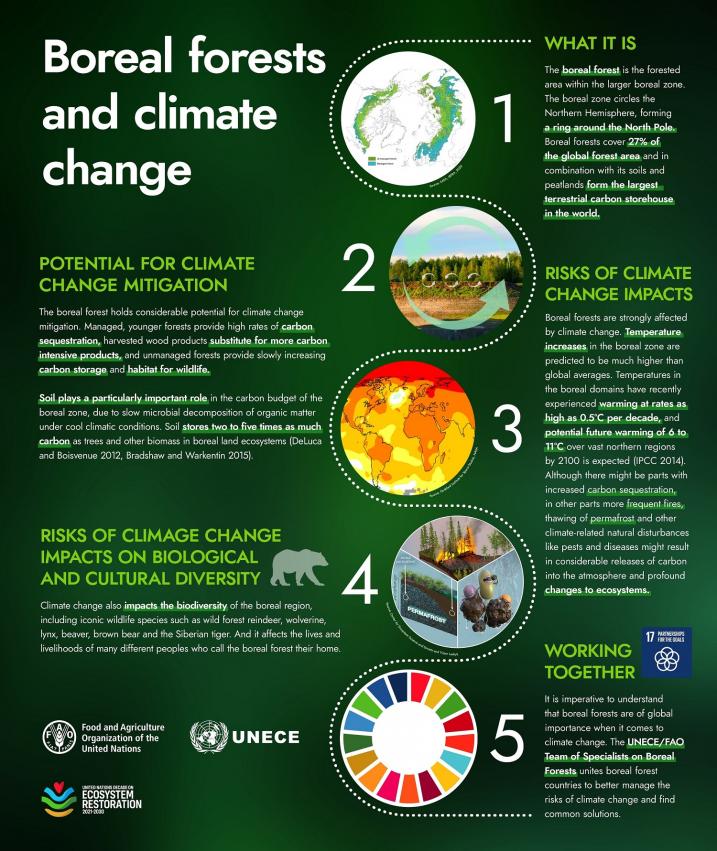Boreal Forests in the UNECE region
Boreal forests, also known as Taiga, circle the Northern Hemisphere to form a ring around the North Pole. They are part of the largest terrestrial biome, accounting for 27% of the world’s total forest area. The Russian Federation, Canada, and the United States account for the majority (93%) of the global boreal forest area.

Although boreal forests grow more slowly on average than their temperate and tropical counterparts, together with their soils and peatlands, they form the largest terrestrial carbon storehouse on earth. Boreal forests shelter a distinctive biodiversity system including iconic wildlife species such as wild forest reindeer, wolverine, lynx, beaver, brown bear and the Siberian tiger. They also provide essential products and services and secure the livelihoods of many rural and indigenous communities.
In short: they are crucial for sustainable development in the entire boreal region and beyond.
UNECE/FAO unite scientists and policymakers through a dedicated Team of Specialists on Boreal Forests. Find out more information about their work here.

Events on boreal forests:
- The science and policy of wildfires in the boreal biome, International Boreal Forest Research Association (IBFRA) Conference, 20 August 2021.
- Snapshot on Boreal forests' contribution to the Sustainable Development Goals, Regional Forum on Sustainable Development in the UNECE region, 15 March 2021. Watch the recording in English and Russian.
